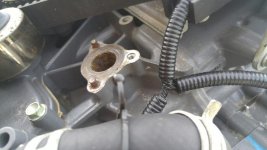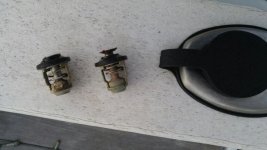Randy Brunson
Contributing Member
I did a pretty extensive service over the winter including new impeller kit, replaced internal zinc anodes (mentioned because it involves taking the exhaust manifolds off), foot oil, and engine block oil. The boat has run great for several trips (including the weekend before), but this past weekend I was gearing up to take the family out and as I was running over to pick them up from the dock, the overheat alarm came on (about a 30-minute ride with a good bit of idling in no wake zones) while I was cruising about 3300 rpm. The alarm brought it down to "limp" mode. I turned it off and let it cool down for a few minutes. It cranked up fine and I tried it again, but after a minute of running on plane, it went off again and I turned around and limped back home. The engine has a very strong pee stream. It's a 2004 with about 1100 hours. I'm not aware of a time when the t-stats were changed.
Thank you.
- My first thought is to go ahead and change the T-stats. I'm hoping it's this simple, but I'm just confused how a t-stat would be fine one Saturday, and then start acting up the following Saturday.
- In other threads on overheating, there are mentions of a "pressure relief valve." I can't figure out where those are located. Can anybody elaborate on that?
- Anything else I should be looking at? Like I said, I'm planning to change the T-stats and O-rings. I just wanted to check with y'all before I place my parts order.
Thank you.



